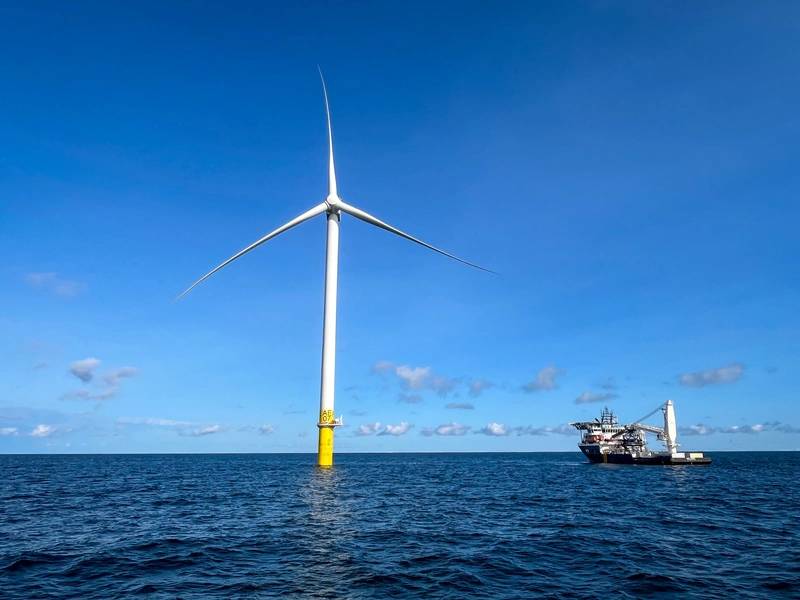Anchoring America’s Energy Future: The Vital Role of Offshore Energy
Amidst sensational headlines and questionable policy decisions from Washington, D.C., the U.S. offshore energy sector stands resilient. This vital industry not only powers our nation with reliable energy but also enables hundreds of thousands of jobs across all 50 states and strengthens national security. From the Gulf of Mexico to the burgeoning offshore wind farms along the East Coast, the resilience and innovation of this sector are critical to driving economic growth and ensuring our nation’s energy security.
The Gulf of Mexico has long been a cornerstone of U.S. offshore oil and gas production, recently safely producing close to 2 million barrels of oil per day with a small footprint. Yet, recent developments from Washington have cast a shadow over the region.

2024 marks the first year since 1958 without an offshore oil and gas lease sale in the Gulf. Only three lease sales are scheduled over the next five years.
These policy decisions are inconceivable given the Gulf’s role as a wellspring of stable, affordable and lower-carbon energy that drives economic growth and generates billions in government revenues.
The recent ruling by the U.S. District Court for the District of Maryland, siding with environmental activists against the Gulf of Mexico Biological Opinion (BiOp), poses significant challenges. By vacating the BiOp effective December 20, 2024, the court has nullified a crucial regulatory framework, potentially leading to potential permitting slowdowns, operational delays and overwhelmed agencies.
This decision could open the door to an unpredictable regulatory environment, deterring investment and jeopardizing economic growth, tax revenues and jobs. Without an active BiOp, nearly every permit or plan would require individual Endangered Species Act (ESA) consultations, which could significantly slow down, and potentially halt, the process.
Additionally, it risks increasing energy prices and forfeiting geopolitical advantages to countries like Russia and Iran by limiting domestically produced energy.
Industry is also closely watching the anticipated December 2024 release of the expanded Rice’s whale critical habitat. Previous attempts to bypass regulatory processes and limit public input have cast doubt on this decision, supported by incomplete and flawed science.
The designation could reintroduce mitigation measures that harm energy, industrial, commercial and every marine activity in the Gulf of Mexico without providing meaningful protection for the whales. These restrictions could also impact ships bringing fuel to Florida’s Gulf Coast, cargo ships from Houston and food exports from the Mississippi, disrupting vital supply chains and economic activities.
Despite these challenges, the Gulf of Mexico continues to innovate and produce the energy that lifts society.
New projects in the deepwater Gulf are advancing with groundbreaking techniques. Chevron’s Anchor project, which achieved its first oil in August 2024, exemplifies the industry’s commitment to innovation, safety, and efficiency. As the first deepwater high-pressure development to begin production, Anchor uses 20,000-psi subsea technology to tap into reservoirs at depths of 34,000 feet.

This achievement required the collaboration of numerous companies. For instance, Chevron contracted Transocean’s newly built Deepwater Titan, an eighth-generation drillship, to drill and complete the project’s subsea high-pressure production wells. The Deepwater Titan and its sister ship are the first rigs in the world equipped with a 1,700-ton hoisting system, a 20,000-psi well control system and a 10,000-psi mud system.
Other frontier HPHT projects, like Beacon Offshore Energy’s Shenandoah Project and bp’s Kaskida Project, are poised to follow and build upon the Gulf region’s impressive resilience and status as a premier global energy basin.
There has also been progress in developing new offshore wind projects in the U.S. The South Fork Wind project, a joint venture between Ørsted and Eversource, is New York’s first offshore wind farm and the first commercial-scale offshore wind farm in federal waters. With 12 turbines generating 132 MW of renewable energy, South Fork Wind will power approximately 70,000 homes.
While the power generated from offshore wind projects may be local, the economic significance, including the supply chain, has a national footprint. States like Louisiana, Texas, North Carolina and Florida have already realized jobs and investments from supporting offshore wind projects.
Consider the ECO Edison, the first-ever American-built, owned and crewed offshore wind service operations vessel (SOV), constructed by Edison Chouest. This vessel will play a pivotal role in the operation and maintenance of wind farms, serving as a base for technicians and equipment. Built by over 600 workers across shipyards in Louisiana, Mississippi and Florida, and sourcing components from 34 states, the ECO Edison exemplifies the significant financial investments and collaborative efforts driving the U.S. offshore wind industry forward.
Furthermore, there is an additional pipeline of more than $14 billion in proposed additional investments to ports, manufacturing, vessels, workforce development, and research.
As the U.S. gears up for another election cycle, the political landscape casts a long shadow over the future of offshore energy. However, offshore energy policy does not need to become a contentious issue with debates polarized along party lines.
Offshore oil and gas and offshore renewable energy projects offer significant benefits, including job creation, energy security, and environmental stewardship and conservation. It is crucial for policymakers to recognize the importance of a stable and supportive regulatory environment for offshore energy. By pursuing federal policies that prioritize all-of-the-above energy sources and enable innovation and investment in offshore oil and gas and renewable energy, the U.S. can ensure a lasting and secure energy future.
